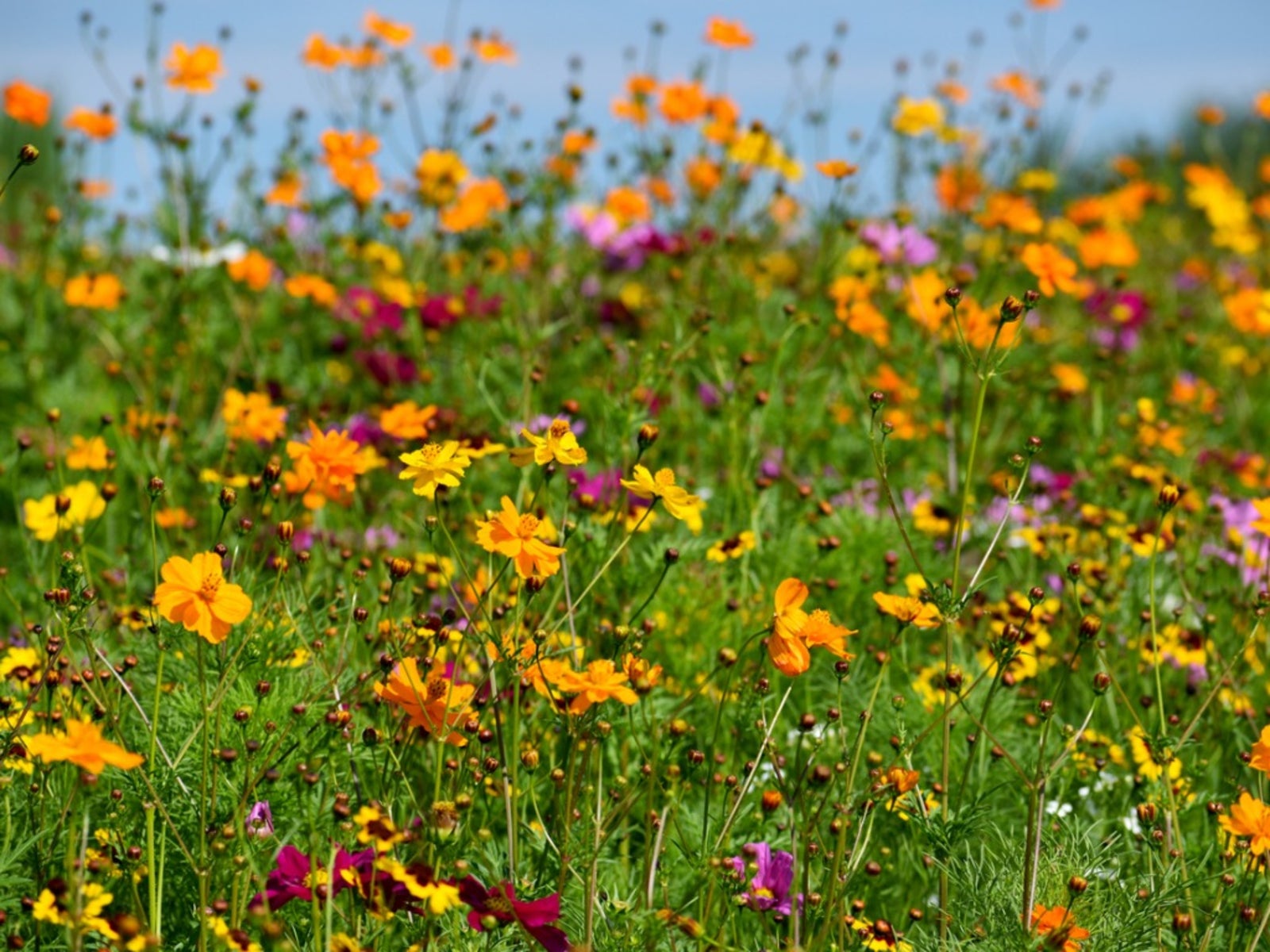Planting Wildflowers - How To Care For A Wildflower Garden


I enjoy the beauty of wildflowers. I also enjoy various types of gardens, so one of my favorite flower gardens is our wildflower garden. Planting wildflowers is easy and learning how to care for a wildflower garden is enjoyable.
How to Start a Wildflower Garden
Our wildflower garden is in a raised bed, but you can also plant directly in the ground. The raised bed was built upon a 2-inch (5 cm.) thick bed of 1 ¼ inch (3 cm.) landscaping rock for drainage, and this is not necessary for wildflower gardens not planted in raised beds. The soil for wildflowers is made up of bagged garden soil as well as compost and a couple of bags of play sand mixed in to help with the drainage. If you are planting wildflowers straight into the ground, you can till in these amendments. Super phosphate is added to the soil for the wildflower garden as the soil is mixed or tilled. The super phosphate provides a nice boost for the root systems of the new wildflower plants as they grow and get established. Once the wildflower garden has been filled with the wildflower soil mix, it's ready to plant. When growing wildflowers, there are many different mixes of wildflower seeds, depending on your focus. For example, you might be planting wildflowers to attract butterflies, or you just want a beautiful mix of blooms, perhaps even a fragrant wildflower mix. Choose the kind of wildflower garden seed mix you want, and you are ready to start planting your wildflowers. Use a hard-toothed rake to rake across the soil to make small, approximately ¾ to 1 inch (2-2.5 cm.) little rows in the soil. The wildflower seeds of choice are sprinkled by hand over the rows that were just made with the hard-toothed rake. Once spreading the seeds is done, I use the same hard-toothed rake and rake the soil in the raised garden lightly going in the other direction so that a crisscross pattern is left behind. After having lightly raked the soil again, the rake is turned over and again lightly drug over the entire soil surface in the new wildflower garden in just one direction, as this helps cover most of the seeds with the soil. The garden is then lightly watered by hand with a watering wand or hose end sprayer set to a gentle rain setting. This watering helps settle in the seeds as well as the soil. A light watering of the wildflower gardens must be done every day until sprouting starts and is especially important on hot and/or windy days. Once the sprouting has begun, the light watering may need to continue for a few more days depending on the temperature during the day and the winds that can quickly dry things out. Test the soil with your finger to see how the moisture content is doing and water as needed to keep the soil slightly moist but not so wet as to have water ponding or making mud, as this can float the roots out of their soil bases and kill the young plants.
How to Care for a Wildflower Garden
Once the wildflower plants have taken off well, a foliar feeding with Miracle Gro or another multi-purpose water-soluble fertilizer is helpful. The application of the foliar feeding will give all the plants a nice boost to produce some beautiful blooms. It is amazing how many wonderful garden friends will be attracted to your wildflower gardens, from honeybees to ladybugs, even some beautiful butterflies, and the occasional hummingbird.
Sign up for the Gardening Know How newsletter today and receive a free copy of our e-book "How to Grow Delicious Tomatoes".

Stan V. Griep contributed to Gardening Know How for many years and has been a Colorado Native Rosarian for over four decades. He is an American Rose Society Certified Consulting Master Rosarian in the Rocky Mountain District, and a member of the Denver Rose Society, the Loveland Rose Society, and the American Rose Society. He is Gardening Know How's in-house expert on all things roses.